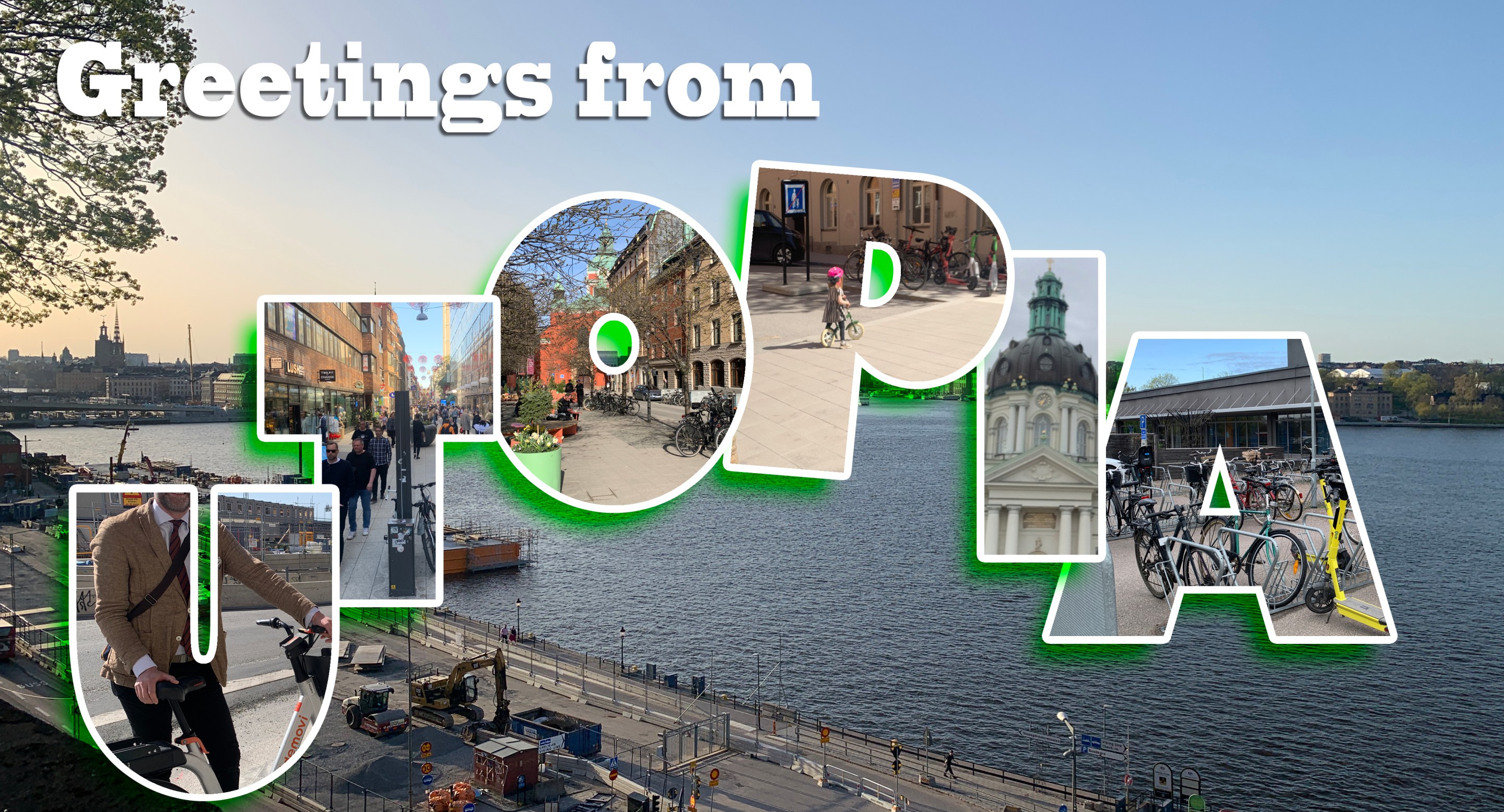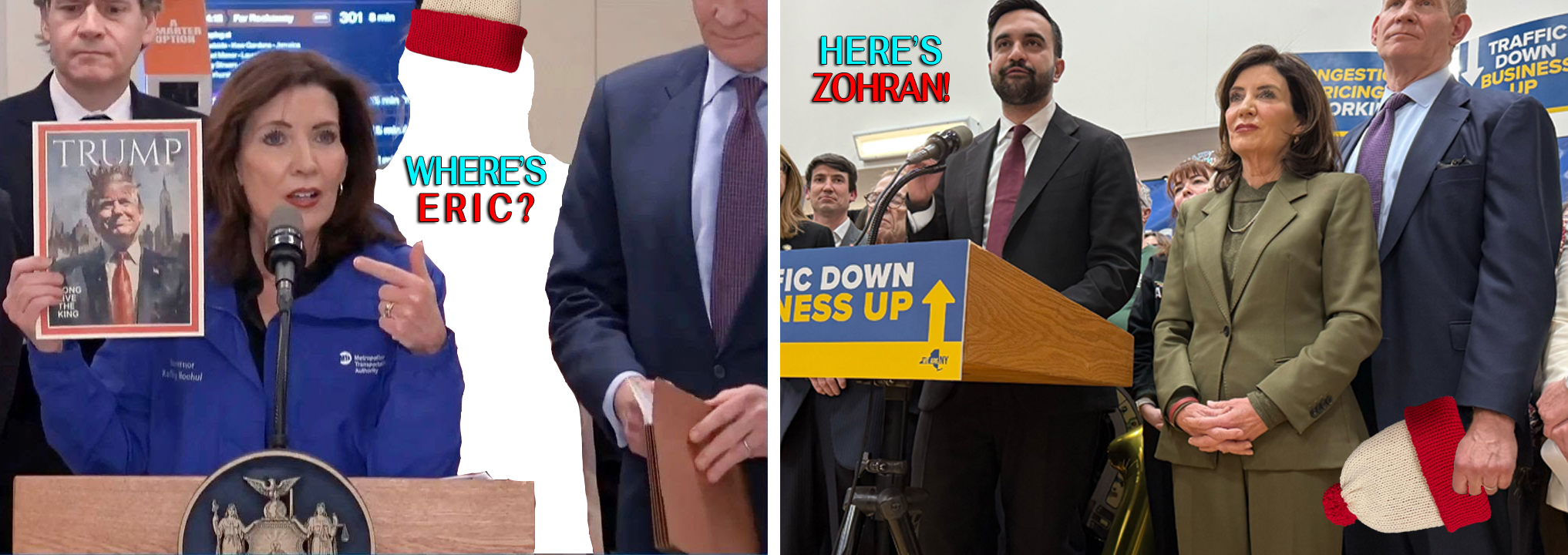This is the second article in a series of pieces written from Sweden, where Streetsblog Editor Gersh Kuntzman is studying congestion pricing, which has existed in Stockholm since 2007 and Gothenburg since 2015. The first story in this series can be read here. To read the entire series, click here.
GOTHENBURG, SWEDEN — “It’s the sledgehammer in the transportation planner’s toolbox.”
Throughout my fact-finding mission to study the Swedish experience with congestion pricing, I have been shadowed by those words from Per Bergström-Jonsson, a Swedish environmental official and consultant who implemented the congestion pricing charge in this city of 500,000 a decade ago. I heard them as I walked along a roadway near my hotel that had once been a four-lane arterial, but was, after the congestion tolls kicked in, converted to a quiet street with a dedicated two-way bus lane up the middle.
I recalled them in Stockholm when I rolled past the opera house on a bike lane that had been widened and improved by the removal of a parking lot, an expansion of pedestrian space and the conversion of a traffic circle into a park — great uses of the "space dividend" that congestion pricing creates.
I glimpsed them in action whenever I walk around Gothenburg, where every street seems to be under construction for a multi-billion new rail tunnel that will speed commuters into the city center in minutes without a car — a tunnel funded by the congestion toll.
And I heard them repeated back, albeit in different form, from Jonas Melin, the owner of Göteburg Manufaktur, a trendy clothing store in the trendy Haga neighborhood that is filled with bustling shops, packed restaurants, crowded plazas ringed by food trucks — and no cars.
"Why would anyone get in a car to go downtown to go shopping," he said. "Is that what they do in New York? But you have transit, no? Here, we take bikes, walk, or use the buses and trams. And we can have a beer after work and not have to worry."
Since the congestion charge was instituted a decade ago, car traffic has dropped about 14 percent in the tolling zone, officials told me. It's a decent decrease, but Gothenburg did not have very much congestion in the first place, I'm told, plus the fees are too low to make a difference — it costs only $2 to enter the city during peak times, dropping to less than $1 for most of the day. Plus, the major rail improvement isn't done yet.
Nonetheless, despite the warnings of a small majority of the population that opposed congestion pricing before it was implemented, fears of a business apocalypse have not become reality.
"If people want to come, they’ll come," Melin said of his customers. "There's no loss of business." (In fact, he had to be reminded that there was even a toll at all.)
Nearby, I wandered into a vintage clothing store (where I got a truly epic green shirt with white chevrons) and the owner laughed at me when I asked if the congestion charge has hurt her business.
"Who would drive downtown to go clothes shopping?" she said, adding that the tolls have only been a positive for her city.
Stockholm residents told me the same thing: air quality is better, traffic is down much more than in Gothenburg, new bike lanes have been installed, buses move faster and road crashes are down. In a "bad year," the head of the department of transportation told me, about eight residents of Stockholm, population 984,000, die in crashes, which would be the equivalent of roughly 80 New Yorkers dying.
Except that in New York City, 250 people die annually, or three times the rate of Stockholm's bad year.
A tale of two cities
Congestion pricing has allowed both Stockholm and Gothenburg to reimagine what urban life can be like, though both cities already had ample experience with mitigating the worst effects of cars, thanks to extremely expensive, and very limited, parking.
In Stockholm, many roads in the commercial district have been pedestrianized, as Streetfilms shows in this short clip:
A moment of #Stockholm Zen....@OpenPlans @BrentToderian @ebkent @Fred_Kent @Penalosa_G @modacitylife @StockholmCyclo @StreetsblogNYC pic.twitter.com/4KKZezjuit
— Streetfilms (Now 1,100+ films!) (@Streetfilms) May 4, 2024
In addition to better walking, Stockholm invested $100 million (roughly 1 billion Swedish kroner) in biking infrastructure in 2013 (and is in the midst of its latest cycling capital plan). Flipping through the pages of the first "Bicycle Billion" pamphlet is like seeing the "After" photos from Utopia: car lanes repurposed as bike highways, parking removed for raised protected lanes, commuter cycling lanes from nearby suburbs, widened sidewalks, greenery everywhere.
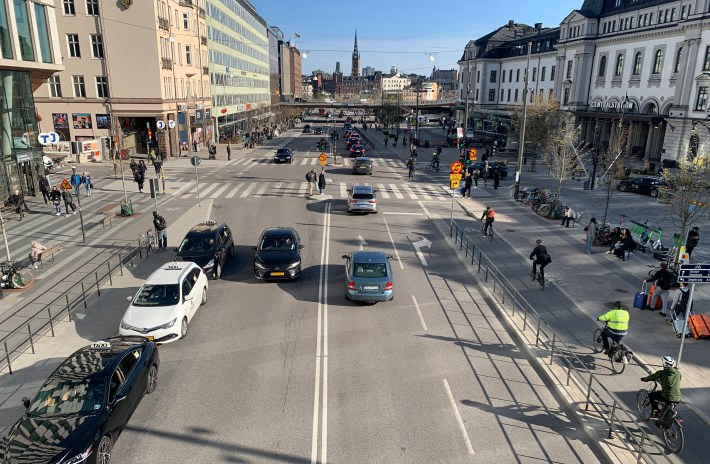
And the money was well spent:
"When I was growing up in the 1980s, fewer than 1 percent of trips in Stockholm were made by bike. Now we see that 32 percent of commuting trips are by bike on a nice day," said Lars Strömgren, who once led the city's cycling club, but is now a Green Party official and Stockholm's vice mayor for transport and the urban environment (aka the Ydanis Rodriguez of Stockholm). "In general, we say cycling has basically doubled in 15 years."
He said that it makes the city far more livable for far more people.
"Thanks to e-bikes, cargo bikes, and all different kinds of mobility, the demography of who choose to bike is now more diverse, and that's very positive for our from the city because cycling should be for everyone," he said.
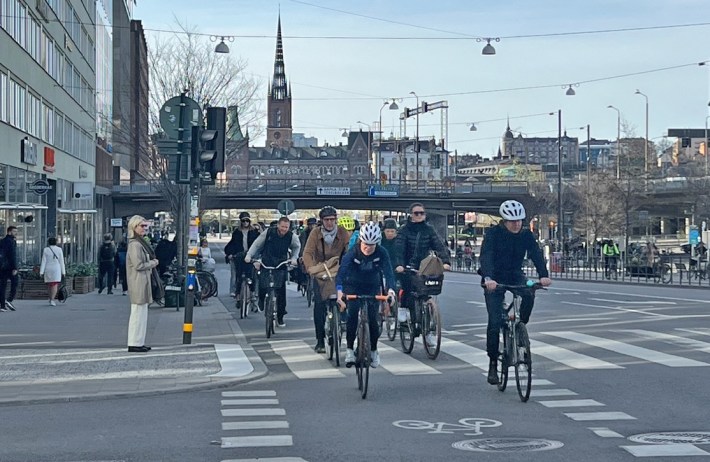
Stockholm's congestion fees are about double those in Gothenburg, but still low by comparison to American tolls; to enter or leave Stockholm's zone, it costs $4 during peak hours. The result is that traffic has declined during peak hours, so the city never gets that "rush hour" feel known to anyone who has walked in Chinatown, Midtown, Downtown Brooklyn, the Hub, Jamaica or any number of neighborhood centers in New York at around 5 p.m.
The money has not only been used for cycling projects, but also to expand bus service and dedicated bus lanes. And also build raised crosswalks so kids can be safe without needing a helicoptering parent:
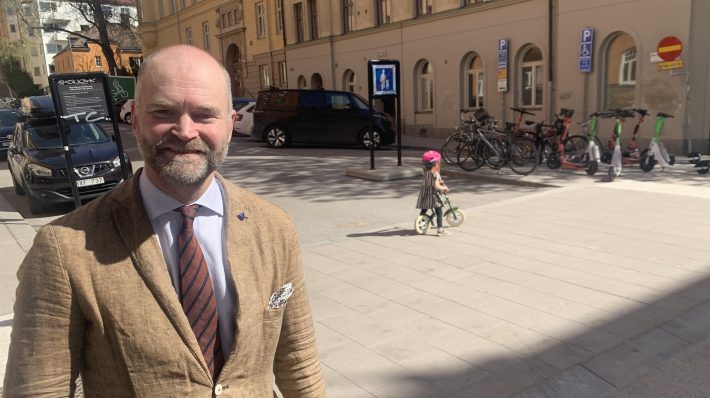
Meanwhile in Gothenburg, a city of 500,000 on the country's west coast that is known as the "Detroit of Sweden" because it's home to Volvo, 70 percent of the money raised by congestion pricing is being allocated to build the new rail tunnel, while the remainder has been used on streetscape projects, and, yes, a bridge and tunnel for car drivers.
Before the launch of the congestion charge, Swedish officials built about 56 miles of new bus lanes, built new bike lanes, expanded the train capacity on platforms and added 34 new trains, created new bus rapid transit lines, expanded park-and-ride locations, and added a dockless bike share system (which I can testify is amazing, thanks to seven-speed bikes). Compared to that, New York has done little to prepare for its congestion toll.
Nonetheless, in a referendum before the congestion charge went into effect, roughly 57 percent of Gothenburgers voted against the toll. But local officials ignored the results in a rare show of multi-party unity. Angry voters quickly coalesced around the Vägvalet party, which ran candidates on just one issue: eliminating the congestion charge. The party got 6 percent of the vote on the eve of the congestion tax, not enough to make a blip.
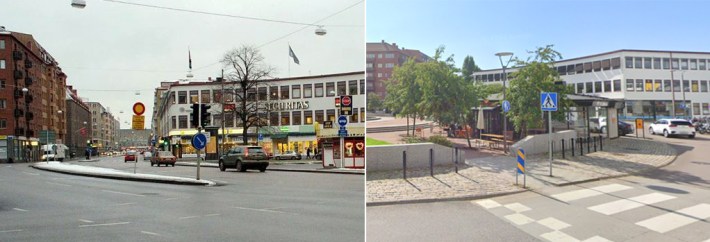
Years later, the party doesn't exist; voters who opposed the congestion toll have evaporated like, well, like traffic in downtown. Bergström-Jonsson explained that the forces opposing congestion pricing can't generate too much outrage because the tolling scheme more or less works.
"Congestion pricing improved travel times far more than all other road investments we have made," he said. "It reduced travel times by 15 percent. It works."
So the choice is ours, New York: We can live in a calm, pleasant and economically vibrant European-styled civilization, or we can continue to drive ourselves into ruin.
